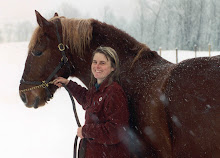Blackboard, or Moodle are online campus communication systems that allow the students to track their grades and assignments online. People don’t go to the library to read reserved material anymore; it’s on Blackboard that they just magically log into on their PC or tablet or iPhone.
Every part of the syllabus and class is virtually uploadable, so they can see if they’re failing or passing. Of course the input provided by the professor needs to be accurate: it wasn’t until week 9 that I realized I was loading quiz scores as assignments. When I made the switch, the grades changed dramatically. Whoops, sorry students…
One time I went to class and realized that I had attached the wrong lecture on the Blackboard, so they hadn’t studied for the correct material (major grade curve).
Another time I tried to explain the difference between positive reinforcement and negative punishment. Several students had the courage to point out the fact that I had completely reversed them. As a result, we have dropped this subject line completely until I have the gumption to try and explain it again…
Teaching is like farming, in the fact that there is a lot of switch-hitting going on. The difference is that in farming, when your plan falls through the floor, most of the animals and plants don’t know that you just bluffed your way through the day. When fifteen pairs of 20- or 30- something year-old eyes look at you and say: Really?- there’s not much you can get away with (if the corn doesn’t get weeded when you say you’re going to weed it, it’s usually a little more understanding).
Eleven year -olds don’t expect switch hits. In fact, my eleven year-old detests them. He would much rather have a routine than my potpourri of surprises. But I am about to embark upon the greatest switch hit I’ve made since graduating at the University of Vermont with a B.S. in Wildlife Biology. Back then, I noticed a job notice advertising for a volunteer seabird biologist on a remote Hawaiian Island; room board, airfare paid for, student loans deferred.
I lived on Tern Island in the Northwestern Hawaiian Islands for almost four years, first as a volunteer, and then as the refuge manager. Five hundred miles northwest of Kauai, on a remnant volcano, surrounded by aqua-blue water and seabirds, seals and turtles, I had an experience that changed my life- for the better. If I had stayed in Vermont and assumed my job as interior decorator in the local store in Middlebury, I think that my life would be vastly different- and boring.
My eleven year-old is wired in. DSL, PSP, Wii, Dish, I can’t even keep up with it all. He doesn’t have any of those things, but I hear about them every day, and how boring his life is without them.
Still- he is ecstatic when the moon is so full and bright that it fills the entire backdoor window. He coos at the sight of the first gray squirrel we’ve ever had on the farm when he catches it gathering nesting material (there’s another squirrel in the area, apparently). His love of birds is growing, and he now has a flock of laying hens that is so productive that we supply a major grocery store in Norwich.
And so, it’s time for me to change it out. I’m taking the summer off from retail farming. Yep, it’s true. No pigs, no meat birds, no 2 acres of vegetables in production. Fallow fields with cover crops and green manures, fallow hoop houses, fewer sheep, and fewer bales of hay. I’m going to construct a Facebook event to barter the cows to a new farmer, with the stipulation that I get something back in the end. No turkeys, no Guineas, geese or ducks. No farmer’s markets. I’ll still have enough for us and for our small CSA, but, nope, nope and nope, I’m spending the summer with my son.
I feel as though I have an opportunity to do something with him for one last time as he changes from eleven to tweenager, and what I’d like to do is hike the Long Trail in Vermont.
Is this crazy? Some people think so. The majority of people I tell look at me, worriedly, like I’m giving up. But I’m not.
I have four freezers full of meat. I have shelves lined with canned vegetables, fruits, juice and jellies. I am farming, but I am concentrating instead on soil-building and conservation.
Is there the chance that I’ll lose my customer base? Yes, but I got it once, and I am confident that I’ll get it again. What I’m not at all sure of is that I’ll have a working relationship with my son for the next five years unless I take the effort to interact with him now.
I’m still a certified organic farm inspector for North Eastern Organic Farming Association, still a vet-tech at VT-Can! in Middlesex, and still a farmer. Just a different kind of one for the summer.
Today the hiking boots that I bid on through eBay arrived. Tomorrow, a high-tech flashlight will come in the mail. I have the tent and the sleeping bags. Now, just to convince the boy…



